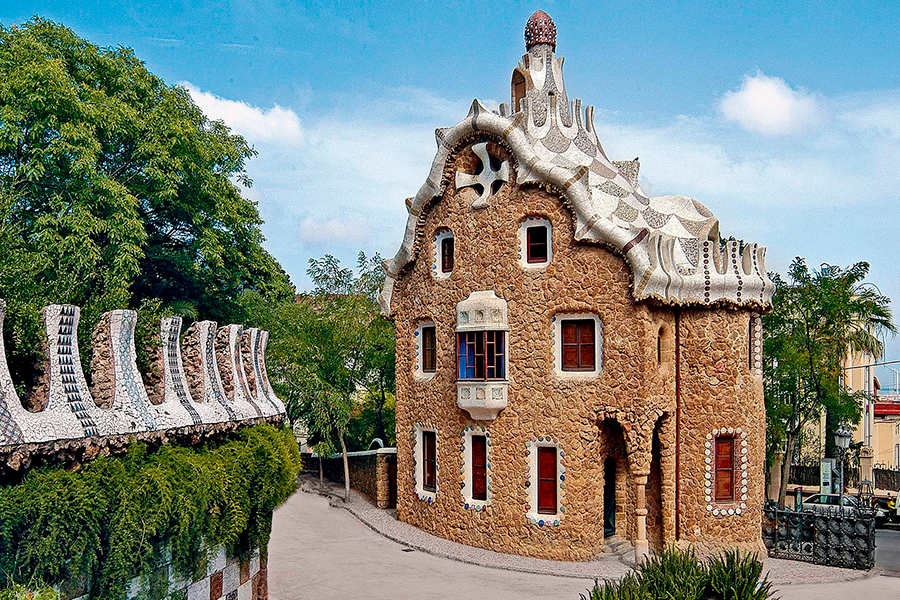Park Guell facts – interesting info on Parc Guell, Barcelona
4.7
(127)
Park Guell was never intended to be a park. It was to be a gated residential community of 60 houses, on the outskirts of Barcelona.
In 1900, Count Eusebi Güell commissioned it and asked ace Spanish architect Antoni Gaudi to start the work. Gaudi worked on Park Guell till the Count died in 1914 and his heirs decided to stop work on the project.
In these 14 years, with the help of his trusted artisans, Antoni Gaudi ended up architecting one of the most beautiful landmarks in the World.
Over the years’ lots of interesting facts about Park Guell have been unearthed. Some are documented Park Guell facts and some are just legendary. Some are academic and some are just Park Guell’s fun facts.
Why should you know more about Park Guell? Because 10 Million tourists visit Park Guell every year – second only to Sagrada Familia. And much ahead of other Barcelona attractions such as Camp Nou, Barcelona Aquarium, Casa Batllo and Casa Mila.
Table of contents
- Guell Park was once a failed project
- ‘Park Guell’ got its name because of British influence
- Gaudi House in Park Guell wasn’t built by Gaudi
- Park Guell has three entrances
- Iron Gates at Park Guell wasn’t part of the plan
- Gaudi wanted to impress right from the word go
- The Salamander at Park Guell is Barcelona’s symbol
- Gaudi invented Trencadis and used it extensively
- Park Guell is full of animal representations
- Salamander
- Snake
- Octopus
- Lions
- Park Guell was Gaudi’s second park
- Gaudi had planned a marketplace in Park Guell
- Park Guell’s terrace offers best views of Barcelona
- Walkways were to connect all houses in Park Guell
- Austria donated trees to be used in Park Guell
- 95% of Park Guell can be accessed free of charge
- Gaudi’s efforts turned a whole mountain green
- There are no straight lines in Park Guell
- Gaudi left secret messages in Park Guell
- Only one house was sold in Park Guell
- After his accident, Gaudi got help from unexpected quarters
Guell Park was once a failed project
We all know that more than 12 million tourists come to see Park Guell every year.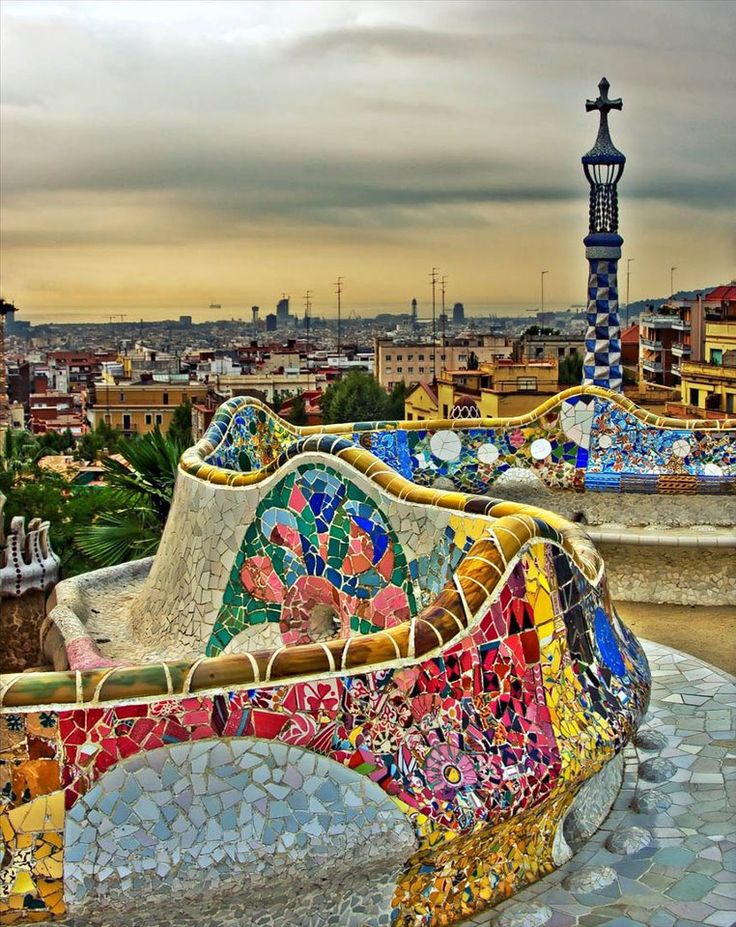
Count Eusebi Güell, who had lots of money and Antoni Gaudí who had lots of ideas joined hands to build Guell Park with lots of high-quality houses.
They built a model house – which is now referred to as Gaudi House Museum – to showcase the residential complex but nobody came forward to book the houses.
As a result, after Eusebi Güell died, work on this project was abandoned in 1914.
The half-built residential complex was bought over by the city of Barcelona in 1922 and converted into a public park. It was opened to the public in 1926.
‘Park Guell’ got its name because of British influence
In 1898, Sir Ebenezer Howard had introduced the concept of the ‘Garden cities’ in the United Kingdom.
He described this Garden city movement as a method of urban planning where residential houses were inter-spread with enough greenery and industry.
Count Eusebi Güell was inspired by the English garden cities movement and wanted to bring it to Spain.
Just like the Garden city plans, this residential community was to have a lot of greenery and hence the word “Park.”
To this he added his family name to make it Park Guell.
Gaudi House in Park Guell wasn’t built by Gaudi
Gaudi’s house is outside Park Guell’s Monumental Zone and to visit the architectural marvel you need to buy tickets separately. Alan Tan Photography / Shutterstock.com
Did you know that Gaudi house, which is the most popular attraction in Park Guell, was not built by Gaudi?
It was built by Gaudi’s friend and an assistant named Francesc Berenguer i Mestres.
Antoni Gaudí had signed the plans on behalf of Berenguer because his friend wasn’t a qualified architect.
Many tourists don’t know this Park Guell fact.
>> Buy online tickets now!
Park Guell has three entrances
The Parc Güell has multiple entrances.
The main access from Carrer d’Olot is the most beautiful. The other entrances are at Carretera del Carmel and Passatge de Sant Josep de la Muntanya.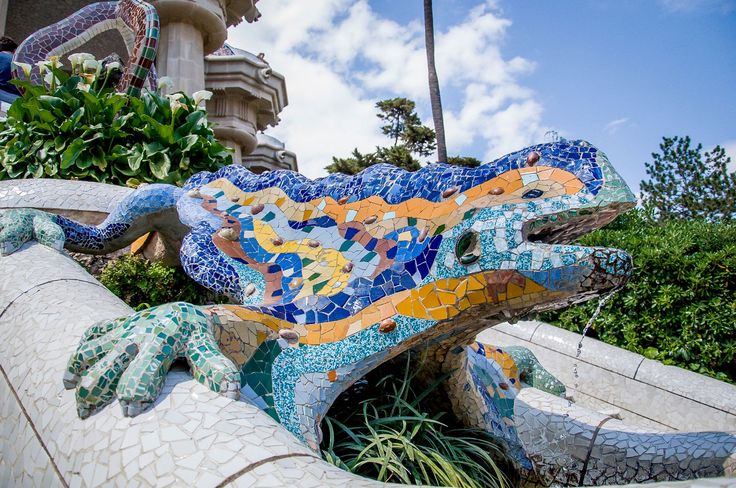
Unless you are visiting as a group in coaches, we suggest you enter via the main entrance.
Tourists traveling to Park Guell in tourists coaches prefer the entrance at Carretera del Carmel because of the coach park. Check out Park Guell Monumental Zone’s map.
Iron Gates at Park Guell wasn’t part of the plan
The iron gates, designed in the shape of palm leaves weren’t part of Gaudi’s plan for Park Guell.
When Park Guell was first built the gates were wooden.
Sometime after Gaudi’s death, the current iron gates were brought in from Casa Vicens, the first house that Antoni Gaudi designed in Barcelona.
Image: Wikimedia.org
>> Buy tickets for Casa Vicens museum
Visual Story: 13 must-know tips before visiting Park Guell
Gaudi wanted to impress right from the word go
Many tourists who have been to Park Guell in Barcelona have said that it felt like entering Alice in Wonderland. Nito / Shutterstock.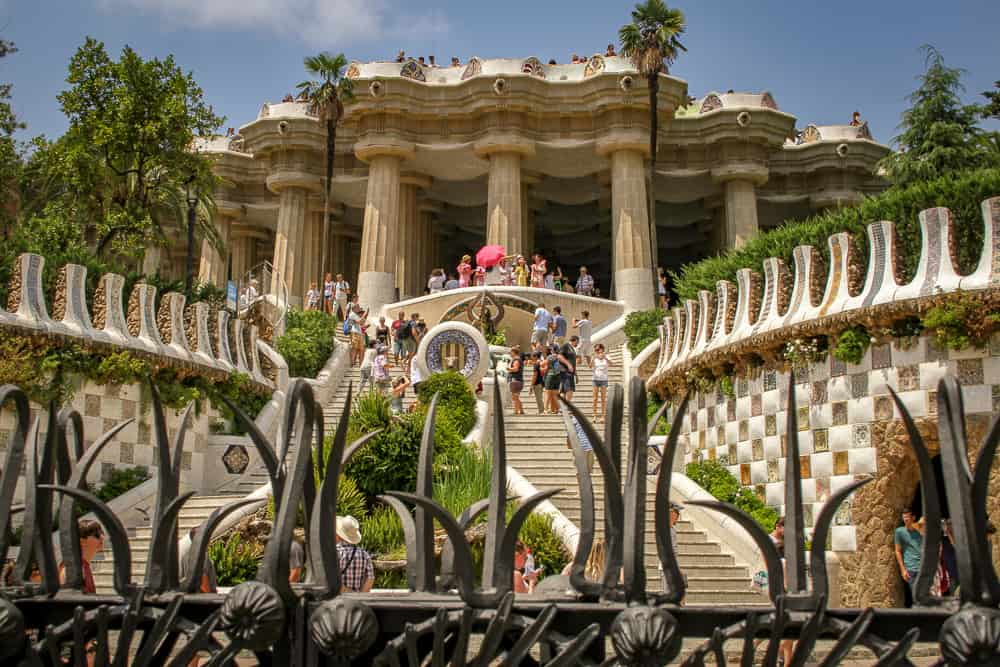
On both sides of the Park Guell’s main entrance are two very imposing buildings – the porter’s lodge with a waiting room and telephone etc on the right and the guard’s residence called Casa del Guarda to the left.
Casa del Guarda is today part of Barcelona History Museum. Both the buildings are beautiful and attract a lot of crowds.
Entry to Casa del Guarda is now included in the entrance fee to Park Güell so you don’t need to buy separate tickets.
These two buildings were inspired by the story of Hänsel and Gretel.
The Salamander at Park Guell is Barcelona’s symbol
There is always a queue to take photographs with Park Guell’s favorite Salamander. Image: Roselinde.me
A colorful salamander rises prominently on the stairs at the entrance of Park Güell as one of its fountains.
This multicolored mosaic salamander is also sometimes known as “el drac” or the dragon. And Sometimes as the Park Guell lizard.
Since this Salamander at Park Guell was considered the symbol of Barcelona, three vandals tried to destroy it in 2007.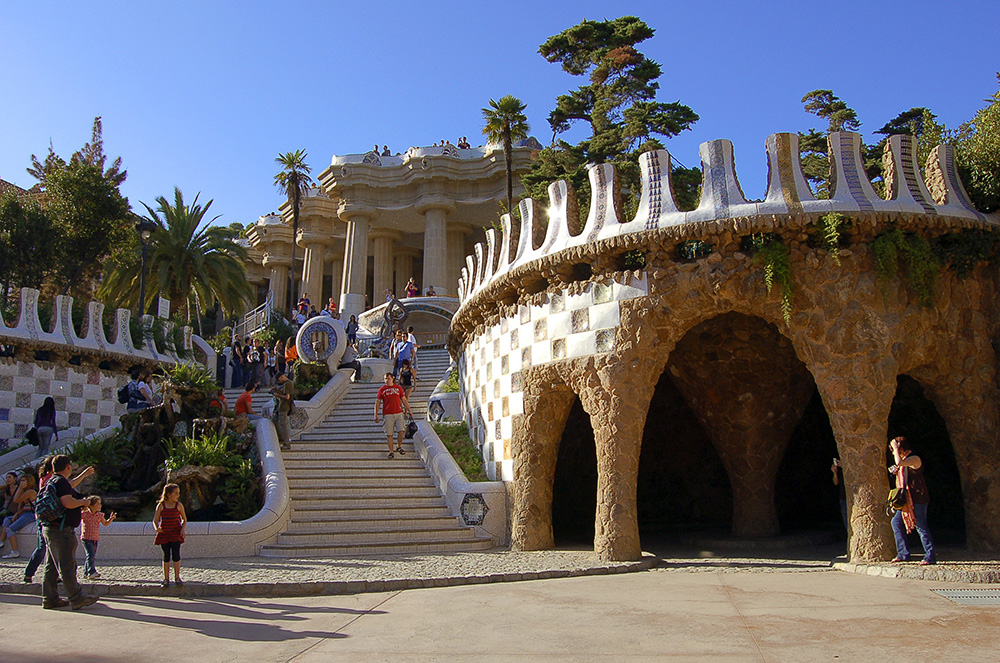
They entered Park Guell with an iron bar and rained blows on the beautiful Salamander statue and destroyed its face.
Thankfully, they were arrested by the police before they could cause any more damage.
Measuring 2.4 meters in length, this Salamander seems to be guarding Park Guell. It is made of bricks and covered in colorful Trencadis.
As for what is Trencadis, read on….
Gaudi invented Trencadis and used it extensively
This is an interesting Antoni Gaudi’s Park Guell fact.
To bring uniqueness and colorfulness to his work, Antoni Gaudí invented Trencadís. He had first used it on his work called Fincas Güell, one of Count Guell’s estates in Barcelona.
Trencadis is a mosaic decorative system where the artisans cover surfaces with small pieces of broken ceramic. Gaudi made sure artisans working on Park Guell used Trencadis everywhere.
The name Trencadis originated from the Catalan word ‘trencar’, which means ‘to break’ in English.
Park Guell is full of animal representations
It is no secret that Gaudi loved nature.
And to top it, some of the best execution of Trencadis technique is on the animals. Broken, colorful ceramic pieces make these animals look life-like.
Salamander
Your tour of Park Guell will start with the Salamander at the entrance (some also call it the Dragon).
While some believe, this Salamander guards the park, other historians say it represents alchemical Salamander, symbolizing fire.
Snake
Since Gaudi was a Catalan (a native of Catalonia in Spain) he decorated the staircase at the entrance with a snake surrounded by the Catalan flag.
Some historians believe that this snake represents Nejustan, a snake Moses carried on his staff.
Octopus
A large Octopus rests on the ceiling of Hypostyle Room, the marketplace for the residential complex.
This Octopus represents the water drainage system that passes through the inside of this roof.
Lions
On the outside of the balcony are gargoyles in the form of lion heads.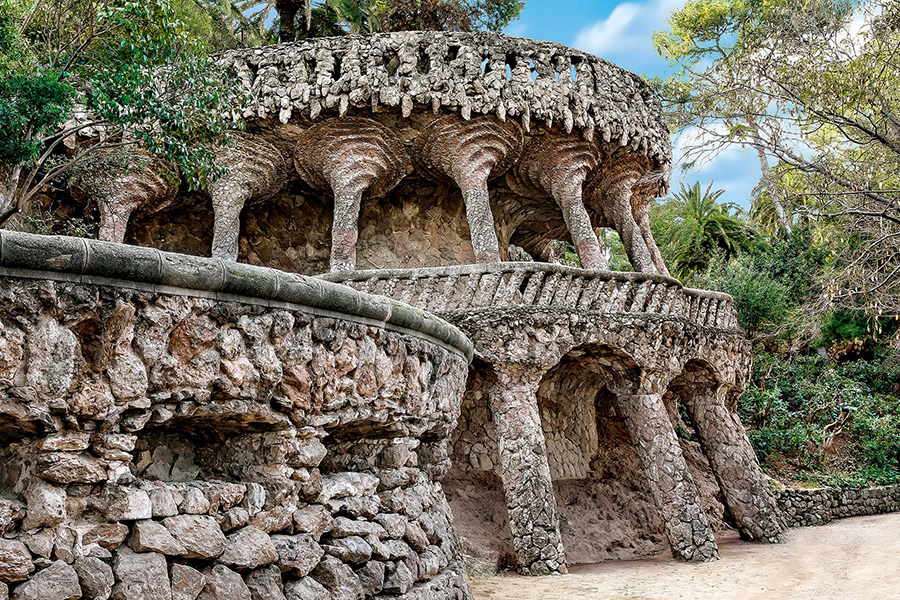
Buy Park Guell Tickets >>
Park Guell was Gaudi’s second park
Park Guell wasn’t the first park that Antoni Gaudi worked on.
As a young and upcoming architect, he had designed the central masterpiece – a fountain – for Parc de la Ciutadella in Barcelona.
The fountain was guarded by winged Dragons, which went on to become one of Gaudi’s trademarks in his later works.
Gaudi had planned a marketplace in Park Guell
Since the location of Park Guell was a little outside the city of Barcelona (back in those days) Gaudi wanted to provide a market for residents inside the residential complex itself. Image: Mywanderlustylife.com
This is a Park Guell fact which proves that Antoni Gaudi was a forward-thinking architect.
The Hypostyle Room in Park Guell, made up of 86 striated columns, was to be the marketplace for the gated residential complex.
Its design was heavily influenced by the Roman temples.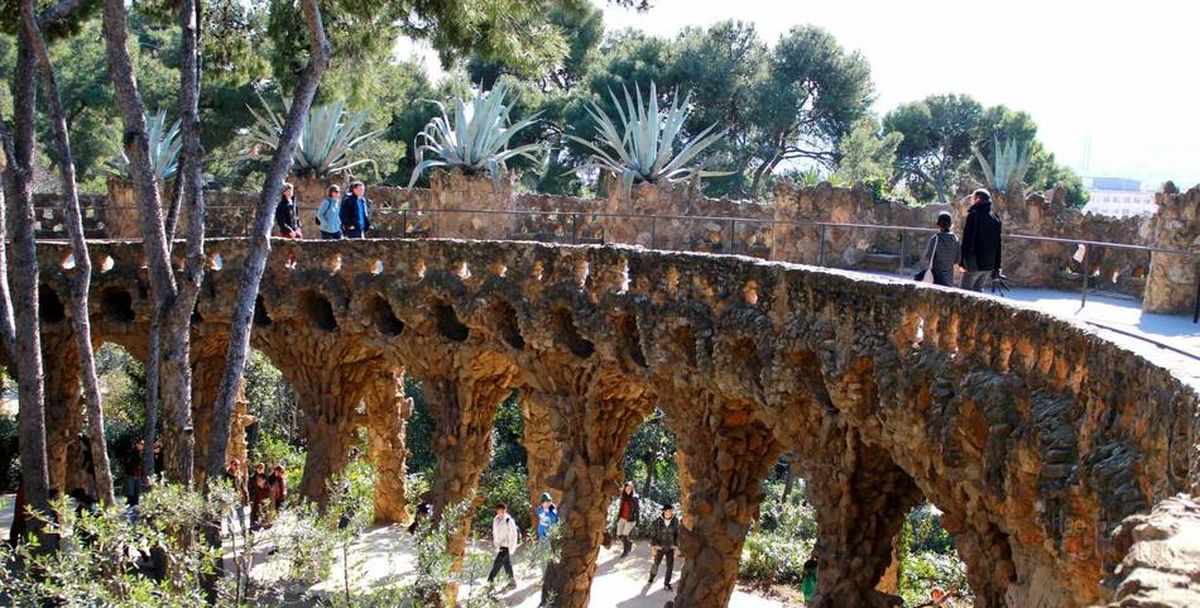
Hypostyle Room is locally known as Sala Hipóstila.
Just above the Hypostyle Room is the well-known Guell Park terrace from where you can see the whole of Barcelona.
Park Guell’s terrace offers best views of Barcelona
Antoni Gaudi ensured that the architects working on Park Guell used these benches regularly. Legend has it that he wanted them to know how comfortable or not comfortable the seats were. Once you sit on these benches you will realize that Gaudi’s trick worked. Dvoevnore / Shutterstock.com
Parc Güell’s best attraction is its terrace, which overlooks Barcelona. The vantage point this terrace offers results in some of the best photographs of Barcelona.
All along the terrace runs a serpentine bench, where tourists can rest. The comfort of these benches is legendary – perhaps the first ergonomically designed benches in the World.
The terrace is 110 meters long and is decorated with colorful mosaics all along.
This balcony was to be the entertainment space for the residents of the complex.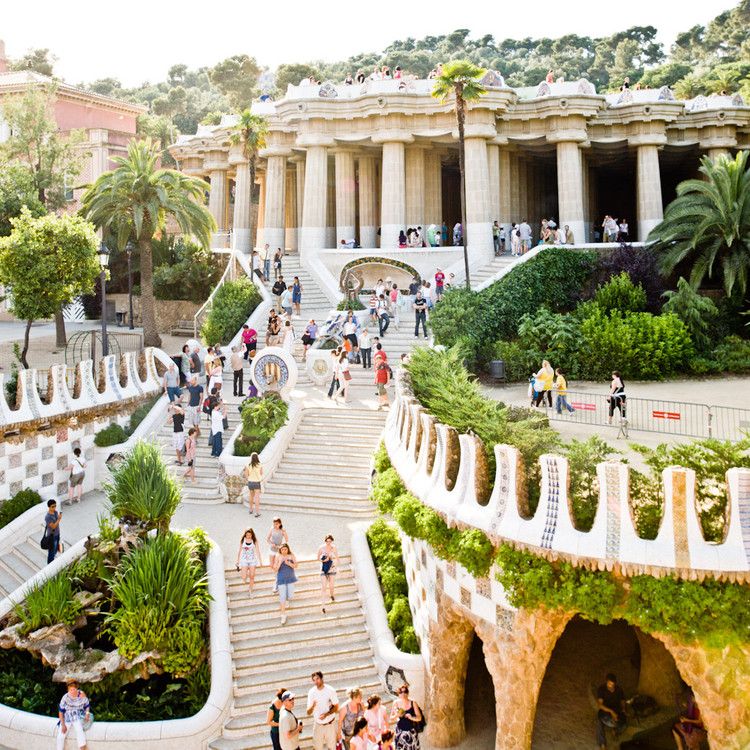
Take a selfie on this balcony. Buy Skip The Line tickets for Park Guell
Walkways were to connect all houses in Park Guell
Gaudi didn’t want to deviate much from nature, so the look and feel of what he built imitated what was seen around. Image: Trover.com
Gaudi’s team built covered footpaths which were to connect all the houses within the residential community.
These covered footpaths also supported the roads above – one of the features of Gaudi’s architecture where every element served more than one purpose.
The Laundry Room Portico is one such covered arcade and is named so because of the laundress sculpted into one of the columns.
Gaudi had each of these columns supporting the walkway designed by a different architect to make it unique.
He also used local stone which helps them merge with the natural landscape.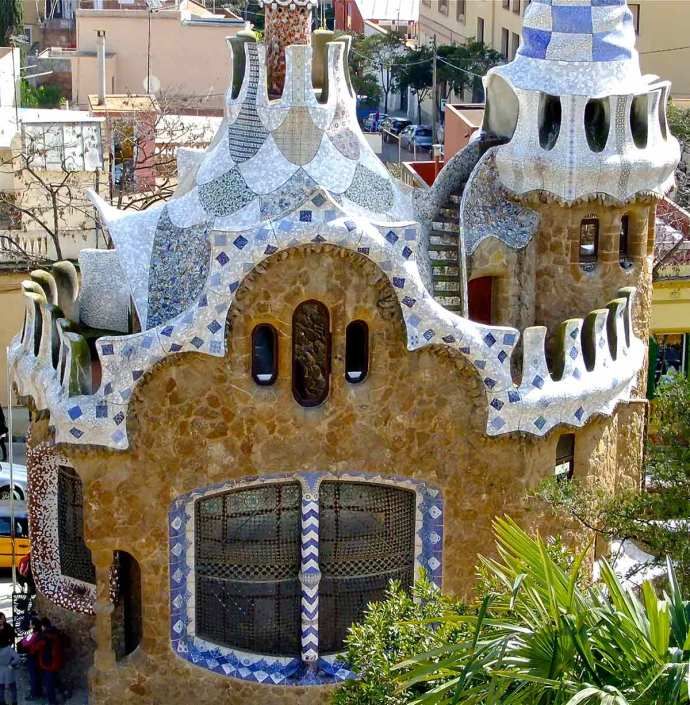
Austria donated trees to be used in Park Guell
Image: Thecastlehome.blogspot.in
One of the zones of Park Güell is called Austria Gardens. It wasn’t always called so.
When the city of Barcelona had taken over Park Guell, this zone was empty so they started using it as a municipal plant nursery.
However, in 1977 Austria donated a lot of trees which were planted in this zone thus giving it the name ‘Austria Garden.’
95% of Park Guell can be accessed free of charge
Did you know that when you buy tickets for Park Guell, it is only for 5% of the park? You can wander around the other 95% free of charge.
The paid part of Gaudi’s park is called the Monumental zone and includes the entrance area with the colorful Salamander, the Casa Del Guarda, the balcony with curved bench and the market hall. Buy tickets to Park Guell’s monumental zone
To ensure the best experience for tourists visiting this Gaudi’s masterpiece, only 400 visitors are allowed inside the monumental zone for every half hour.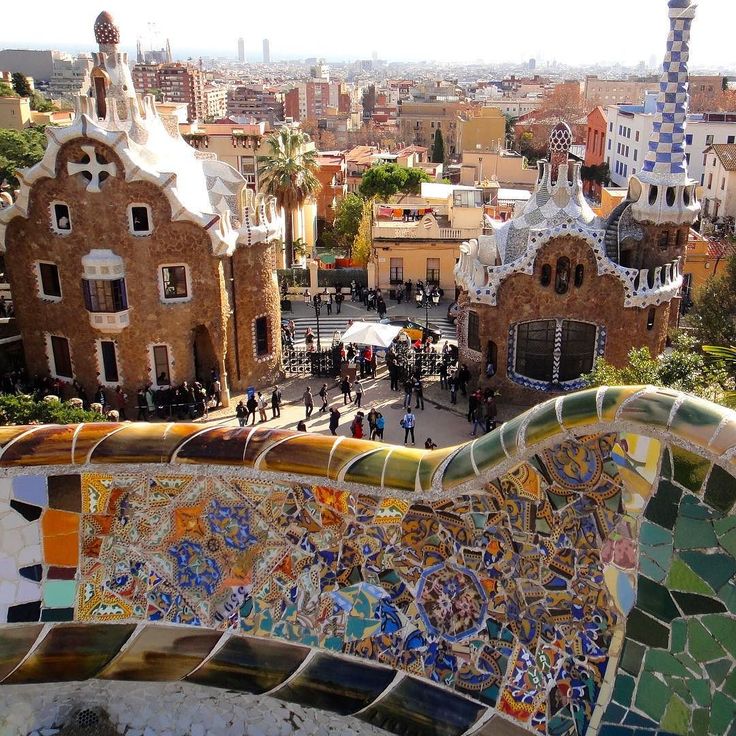
Gaudi’s efforts turned a whole mountain green
This is an environmental Park Guell fact.
Park Guell is located on a mountain. Today the location is full of vegetation but it wasn’t always so.
When Eusebi Güell commissioned Antoni Gaudi for building Park Guell, the mountain was called Muntanya Pelada or ‘bare mountain’ because it was so barren.
In the 14 years that Gaudi was working on this project, he introduced a multitude of plants and Mediterranean vegetation to the mountain.
With time these plants and trees adapted to the surroundings and prospered.
Some of the plants and trees Gaudi helped in bringing to the bare mountains are – pine, eucalyptus, palm trees, carob trees, oaks, olives, figs, cork oaks, cypresses, almond trees.
With time this flora resulted in the growth of fauna as well.
Recommended Reading: Best things to do in Barcelona for families with kids
There are no straight lines in Park Guell
Gaudi believed that straight lines didn’t exist in nature.
Gaudi left secret messages in Park Guell
It is believed that Antoni Gaudi was a Freemason (a secret group which only recruits high achievers) and he is known to have left secret messages all over Park Guell.
Park Guell has five-pointed stars all around. The number five represented order and chaos for the Freemasons.
It also represented the “five senses.” For the secret society, the ‘number 5’ was also the fifth element – after Earth, Fire, Water and Air.
Image: Barcelona.ticketbar.eu
Gaudi also seems to have an affinity to the number 33. The Freemasons’ hierarchy had 33 levels and therefore Gaudi is believed to have introduced 33 steps in the staircase at the entrance of Park Guell.
Gaudi is known to have carried his obsession with the number 33 to Sagrada Familia too.
On the Passion facade, he designed a Sudoku where all sides add up to 33.
However, many historians debunk the Freemason theory saying that the number 33 only represents the age at which Jesus Christ was crucified.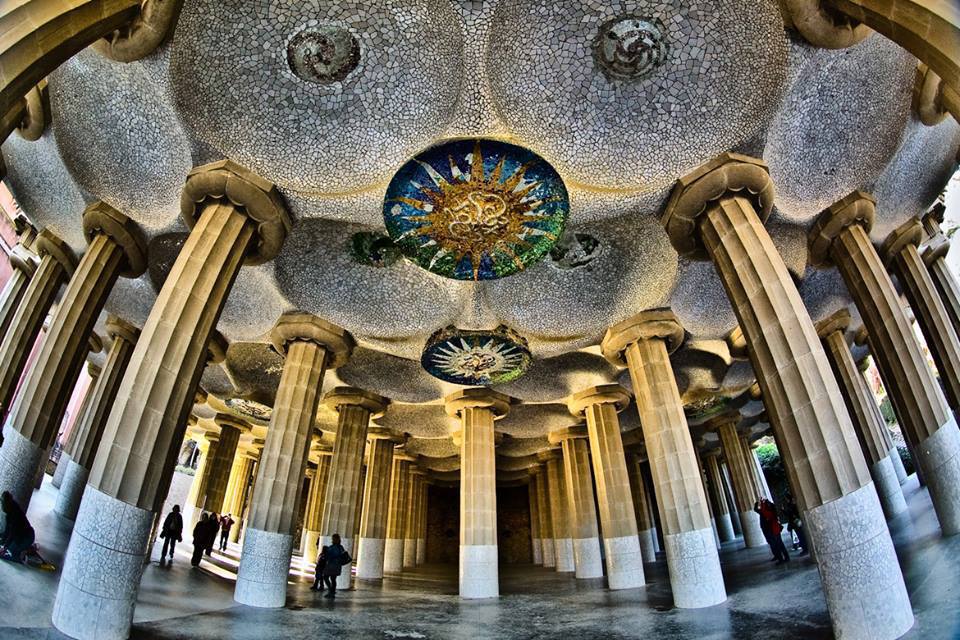
Only one house was sold in Park Guell
Barcelona Lawyer Martí Trias i Domènech was the only person who believed in the Park Guell project.
In 1905 he bought a house in the park and aptly named it Casa Martí Trias i Domènech.
He would end up being the first and last person to buy a house in Park Guell.
This Gaudi believer had a son called Alfonso. Now, why are we talking about his son? To find out, read on.
After his accident, Gaudi got help from unexpected quarters
Many years after the Park Guell project was abandoned, Antoni Gaudi was hit by a tram while he was crossing the road.
Since Gaudi practiced austerity, he wasn’t wearing ‘good’ clothes and everyone mistook him for a beggar and left him to die.
It was the son of Park Guell’s first buyer, Alfonso, who recognized the ace Spanish architect and took him to the hospital for treatment.
Gaudi however, never recovered from the accident and died.
Buy Park Guell Tickets >>
If you book this ticket online, you save up to 1 Euro per ticket because you don’t pay ticket window surcharge.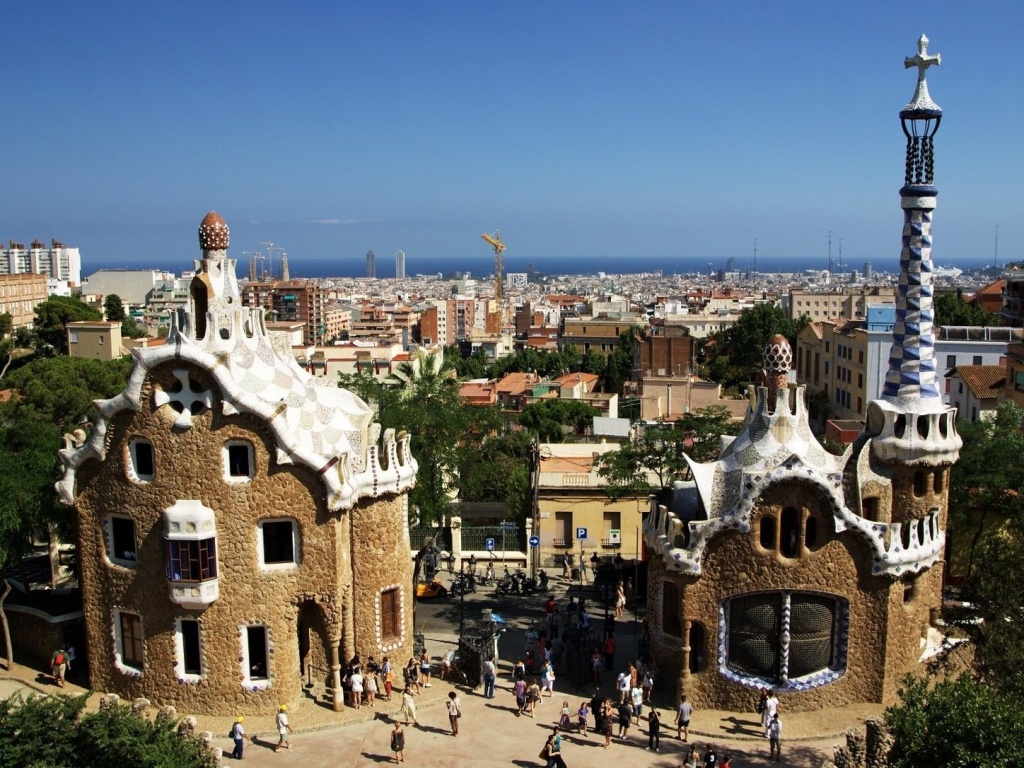
Sources
# Theculturetrip.com
# Parkguell-tickets.com
# Enjoytravel.com
# Justfunfacts.com
The travel specialists at TheBetterVacation.com use only high-quality sources while researching & writing their articles. We make every attempt to keep our content current, reliable and trustworthy.
Recommended reading
- Sagrada Familia facts
- Casa Batllo facts
- La Pedrera Facts
- Camp Nou facts
- Casa Mila facts
Popular attractions in Barcelona
# Park Guell
# Sagrada Familia
# Casa Batllo
# Casa Mila
# Barcelona Zoo
# Camp Nou tour
# Montjuic Cable Car
# Joan Miro Foundation
# Dali Theatre-Museum
# Montserrat Monastery
# Barcelona Aquarium
# Moco Museum
# Gaudi House Museum
How useful was this post?
Click on a star to rate it!
Barcelona’s Park Güell for Kids – A Family-Friendly Itinerary
MORE PHOTOS
Barcelona, Spain
Complete your information
We need a few more details before you can unlock the full benefits
of being a nugget member.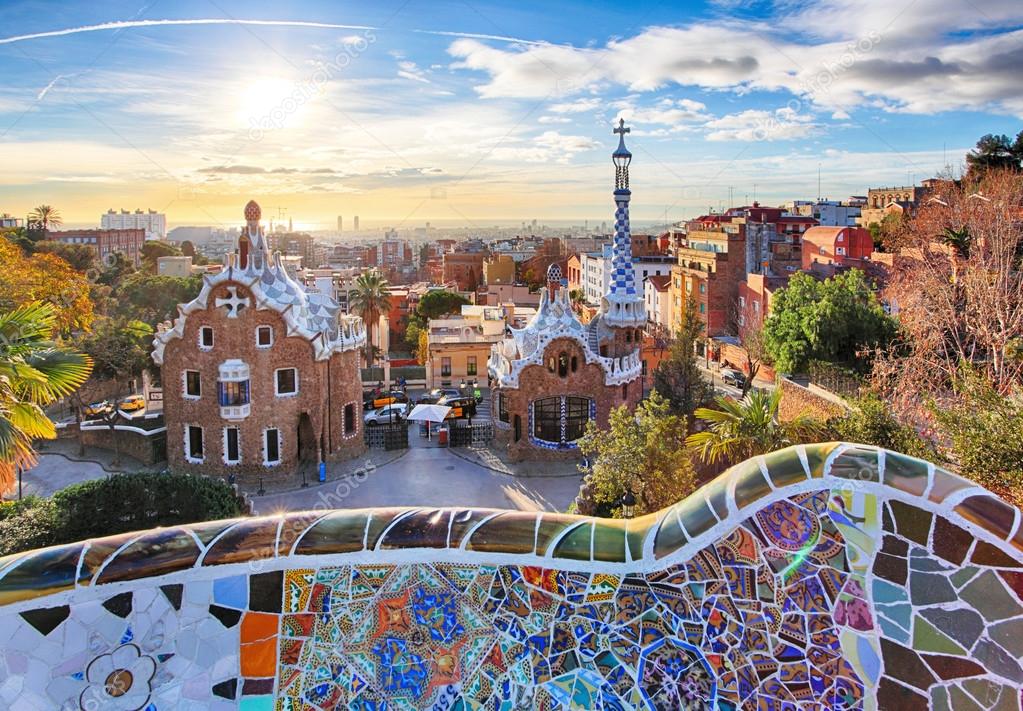
We need a few more details before you can unlock the full benefits of being a nugget member.
*
Home CountryAfghanistanÅland IslandsAlbaniaAlgeriaAmerican SamoaAndorraAngolaAnguillaAntarcticaAntigua and BarbudaArgentinaArmeniaArubaAustraliaAustriaAzerbaijanBahamasBahrainBangladeshBarbadosBelarusBelgiumBelizeBeninBermudaBhutanBolivia, Plurinational State ofBosnia and HerzegovinaBotswanaBouvet IslandBrazilBritish Indian Ocean TerritoryBrunei DarussalamBulgariaBurkina FasoBurundiCambodiaCameroonCanadaCape VerdeCayman IslandsCentral African RepublicChadChileChinaChristmas IslandCocos (Keeling) IslandsColombiaComorosCongoCongo, the Democratic Republic of theCook IslandsCosta RicaCôte d’IvoireCroatiaCubaCyprusCzech RepublicDenmarkDjiboutiDominicaDominican RepublicEcuadorEgyptEl SalvadorEquatorial GuineaEritreaEstoniaEthiopiaFalkland Islands (Malvinas)Faroe IslandsFijiFinlandFranceFrench GuianaFrench PolynesiaFrench Southern TerritoriesGabonGambiaGeorgiaGermanyGhanaGibraltarGreeceGreenlandGrenadaGuadeloupeGuamGuatemalaGuernseyGuineaGuinea-BissauGuyanaHaitiHeard Island and McDonald IslandsHoly See (Vatican City State)HondurasHong KongHungaryIcelandIndiaIndonesiaIran, Islamic Republic ofIraqIrelandIsle of ManIsraelItalyJamaicaJapanJerseyJordanKazakhstanKenyaKiribatiKorea, Democratic People’s Republic ofKorea, Republic ofKuwaitKyrgyzstanLao People’s Democratic RepublicLatviaLebanonLesothoLiberiaLibyan Arab JamahiriyaLiechtensteinLithuaniaLuxembourgMacaoMacedonia, the former Yugoslav Republic ofMadagascarMalawiMalaysiaMaldivesMaliMaltaMarshall IslandsMartiniqueMauritaniaMauritiusMayotteMexicoMicronesia, Federated States ofMoldova, Republic ofMonacoMongoliaMontenegroMontserratMoroccoMozambiqueMyanmarNamibiaNauruNepalNetherlandsNetherlands AntillesNew CaledoniaNew ZealandNicaraguaNigerNigeriaNiueNorfolk IslandNorthern Mariana IslandsNorwayOmanPakistanPalauPalestinePanamaPapua New GuineaParaguayPeruPhilippinesPitcairnPolandPortugalPuerto RicoQatarRéunionRomaniaRussian FederationRwandaSaint BarthélemySaint HelenaSaint Kitts and NevisSaint LuciaSaint Martin (French part)Saint Pierre and MiquelonSaint Vincent and the GrenadinesSamoaSan MarinoSao Tome and PrincipeSaudi ArabiaSenegalSerbiaSeychellesSierra LeoneSingaporeSlovakiaSloveniaSolomon IslandsSomaliaSouth AfricaSouth Georgia and the South Sandwich IslandsSpainSri LankaSudanSurinameSvalbard and Jan MayenSwazilandSwedenSwitzerlandSyrian Arab RepublicTaiwan, Province of ChinaTajikistanTanzania, United Republic ofThailandTimor-LesteTogoTokelauTongaTrinidad and TobagoTunisiaTurkeyTurkmenistanTurks and Caicos IslandsTuvaluUgandaUkraineUnited Arab EmiratesUnited KingdomUnited StatesUnited States Minor Outlying IslandsUruguayUzbekistanVanuatuVenezuela, Bolivarian Republic ofViet NamVirgin Islands, BritishVirgin Islands, U.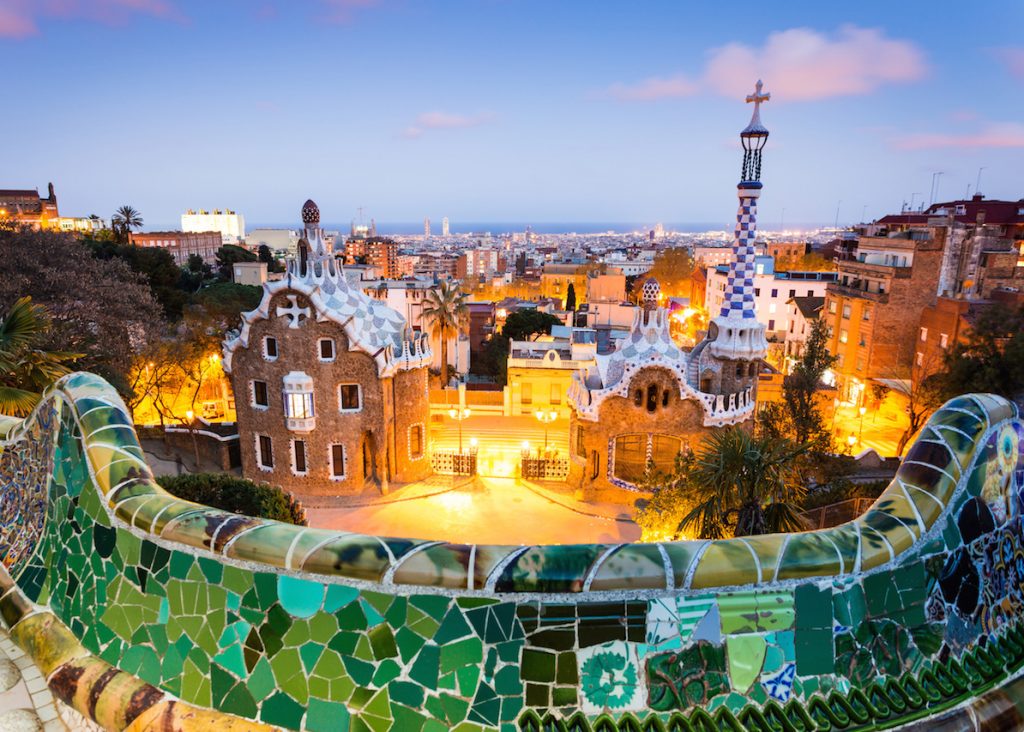
*
I’m a…MomDadGrandmaGrandpaAuntUncleNanny
Complete your information
We need a few more details before you can unlock the full benefits of being a nugget member.
*
Home CountryAfghanistanÅland IslandsAlbaniaAlgeriaAmerican SamoaAndorraAngolaAnguillaAntarcticaAntigua and BarbudaArgentinaArmeniaArubaAustraliaAustriaAzerbaijanBahamasBahrainBangladeshBarbadosBelarusBelgiumBelizeBeninBermudaBhutanBolivia, Plurinational State ofBosnia and HerzegovinaBotswanaBouvet IslandBrazilBritish Indian Ocean TerritoryBrunei DarussalamBulgariaBurkina FasoBurundiCambodiaCameroonCanadaCape VerdeCayman IslandsCentral African RepublicChadChileChinaChristmas IslandCocos (Keeling) IslandsColombiaComorosCongoCongo, the Democratic Republic of theCook IslandsCosta RicaCôte d’IvoireCroatiaCubaCyprusCzech RepublicDenmarkDjiboutiDominicaDominican RepublicEcuadorEgyptEl SalvadorEquatorial GuineaEritreaEstoniaEthiopiaFalkland Islands (Malvinas)Faroe IslandsFijiFinlandFranceFrench GuianaFrench PolynesiaFrench Southern TerritoriesGabonGambiaGeorgiaGermanyGhanaGibraltarGreeceGreenlandGrenadaGuadeloupeGuamGuatemalaGuernseyGuineaGuinea-BissauGuyanaHaitiHeard Island and McDonald IslandsHoly See (Vatican City State)HondurasHong KongHungaryIcelandIndiaIndonesiaIran, Islamic Republic ofIraqIrelandIsle of ManIsraelItalyJamaicaJapanJerseyJordanKazakhstanKenyaKiribatiKorea, Democratic People’s Republic ofKorea, Republic ofKuwaitKyrgyzstanLao People’s Democratic RepublicLatviaLebanonLesothoLiberiaLibyan Arab JamahiriyaLiechtensteinLithuaniaLuxembourgMacaoMacedonia, the former Yugoslav Republic ofMadagascarMalawiMalaysiaMaldivesMaliMaltaMarshall IslandsMartiniqueMauritaniaMauritiusMayotteMexicoMicronesia, Federated States ofMoldova, Republic ofMonacoMongoliaMontenegroMontserratMoroccoMozambiqueMyanmarNamibiaNauruNepalNetherlandsNetherlands AntillesNew CaledoniaNew ZealandNicaraguaNigerNigeriaNiueNorfolk IslandNorthern Mariana IslandsNorwayOmanPakistanPalauPalestinePanamaPapua New GuineaParaguayPeruPhilippinesPitcairnPolandPortugalPuerto RicoQatarRéunionRomaniaRussian FederationRwandaSaint BarthélemySaint HelenaSaint Kitts and NevisSaint LuciaSaint Martin (French part)Saint Pierre and MiquelonSaint Vincent and the GrenadinesSamoaSan MarinoSao Tome and PrincipeSaudi ArabiaSenegalSerbiaSeychellesSierra LeoneSingaporeSlovakiaSloveniaSolomon IslandsSomaliaSouth AfricaSouth Georgia and the South Sandwich IslandsSpainSri LankaSudanSurinameSvalbard and Jan MayenSwazilandSwedenSwitzerlandSyrian Arab RepublicTaiwan, Province of ChinaTajikistanTanzania, United Republic ofThailandTimor-LesteTogoTokelauTongaTrinidad and TobagoTunisiaTurkeyTurkmenistanTurks and Caicos IslandsTuvaluUgandaUkraineUnited Arab EmiratesUnited KingdomUnited StatesUnited States Minor Outlying IslandsUruguayUzbekistanVanuatuVenezuela, Bolivarian Republic ofViet NamVirgin Islands, BritishVirgin Islands, U.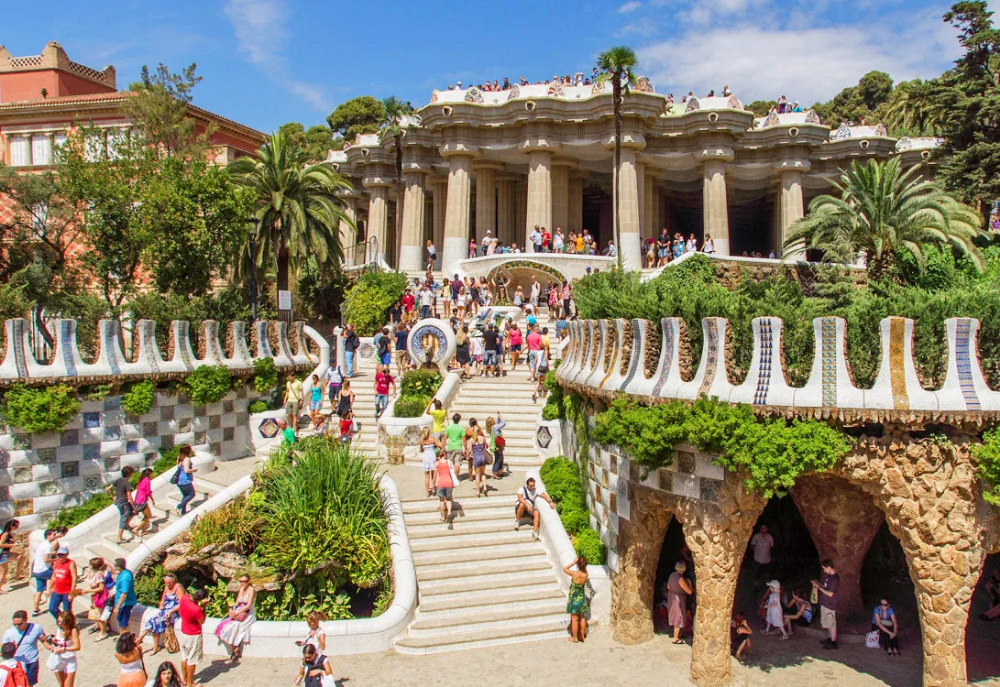
*
I’m a…MomDadGrandmaGrandpaAuntUncleNanny
what to see + useful information for tourists
Parque Güell is one of the most popular tourist attractions in Barcelona and a favorite vacation spot for citizens. It is located in the Gracia district, on the Carmel hill in the northwestern part of the Catalan capital. The park, covering an area of 17.18 hectares, was created at the beginning of the 20th century according to the project of Antonio Gaudi, who worked on the order of his friend and regular customer Eusebi Güell.
Park Güell is a picturesque composition, which includes residential buildings and recreation areas in the form of luxurious gardens with alleys and terraces with ponds, flower beds, gazebos, galleries, grottoes. Today, Park Güell is recognized as one of the most beautiful parks in the world, on a par with the most famous gardens and parks on the planet, including the Yiheyuan Summer Imperial Palace in Beijing, Hitachi Park in Japan, Versailles Park on the outskirts of Paris.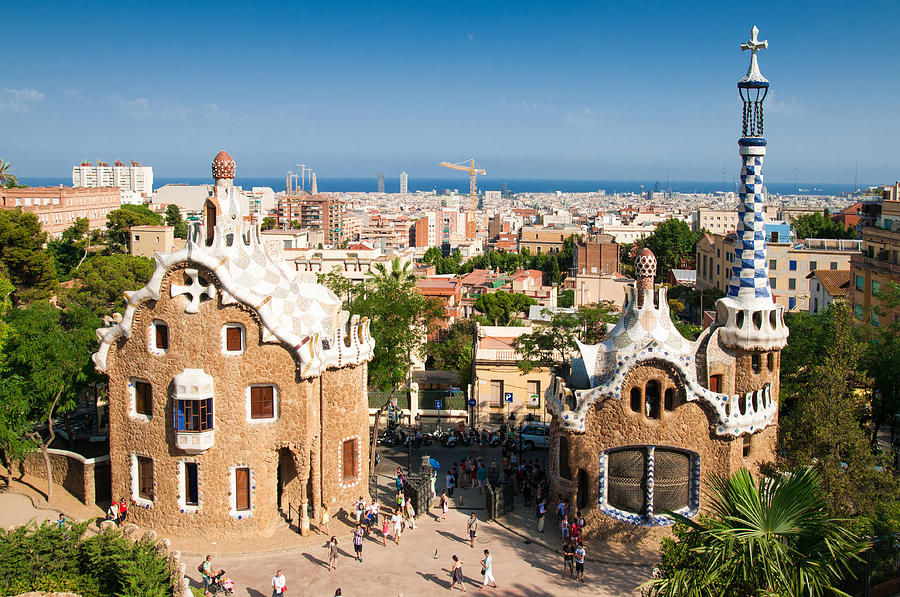
History of Parc Güell
Initially, Park Güell was conceived as an elite suburban residential area for wealthy citizens, which, in addition to magnificent mansions, will have the necessary urban infrastructure and a luxurious green area. This idea was born by Güell after a trip to the UK, where landscape architecture has flourished for centuries.
The work on the project was entrusted to Gaudi, inspired by the idea of a friend. Güell bought a large plot of land for construction on a hill in the suburbs of Barcelona and divided it into several dozen parts, on which mansions with gardens were to be located. However, wealthy citizens were not enthusiastic about the idea of living outside the city, and the project almost failed at the very beginning. Of the 62 plots put up for sale, only two were purchased.
Construction of the Park Güell
Construction of the Garden City began in 1901. At the first stage, Gaudí was engaged in strengthening the slopes of the hill and arranging multi-level terraces.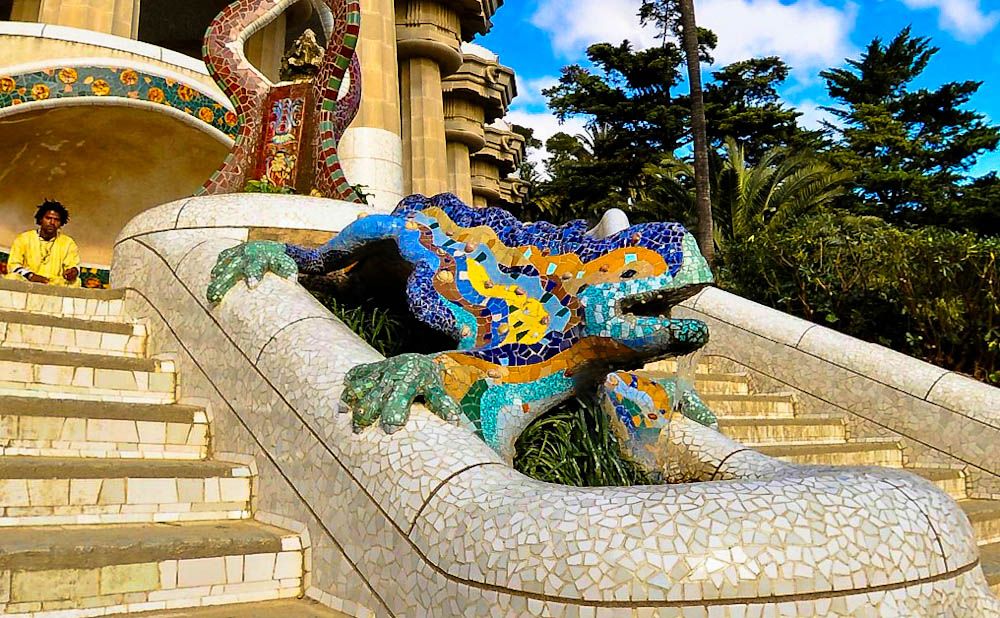
The third and last stage of work, carried out from 1910 to 1913, was devoted to the construction of a serpentine bench in the recreation area and several mansions. The work was completed by 1914. There were still no buyers eager to live in an elite area, the houses built became the residences of Guell himself, Gaudi and their mutual friend, the lawyer Trias y Domenech.
Construction and unsuccessful attempts to sell at least part of the built villas significantly undermined the health of the owner of the park city. Guell died in 1918, and the entire architectural complex, along with buildings and gardens, was sold by the heirs of the Barcelona city administration. Another masterpiece of Gaudí received the status of a public park.
Gaudí Park outside and inside: what to see
Entrance and pavilions
Park Güell strikes the imagination of visitors at first sight. At the entrance, with shaped wrought iron gates, there are two fabulous pavilions, lined with trencadice mosaics and decorated with many decorative elements. As conceived by the architect, the right one was intended for an administrative office, the left one was supposed to become the dwelling place of the gatekeeper.
Nowadays, a souvenir shop is located in the administration building, the second pavilion has been preserved as a model. It is worth paying attention to every element of the decor of the pavilions – roofs with figured turrets shining in the sun, finished with ceramic tiles, facade cladding, chimneys in the shape of mushrooms, huge windows in figured frames, elegant balconies, medallions.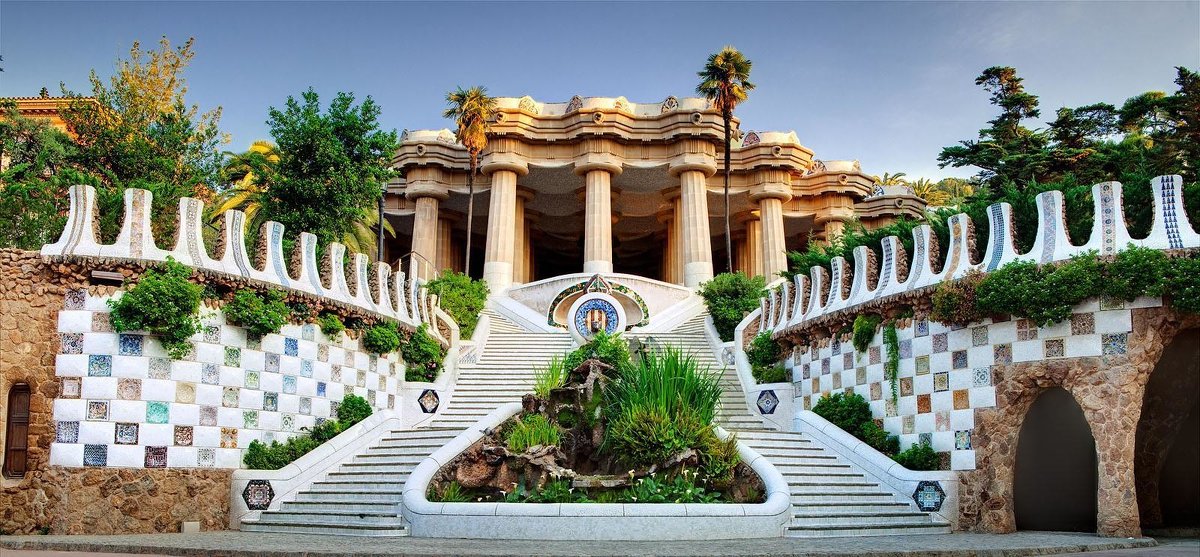
Grand staircase
Directly at the entrance of the park guests are met by a wide front staircase leading to the center of the composition.
- The lower part of the staircase is decorated with a flower garden with a fountain and a figurine of Gaudí’s favorite mythological character — Salamander lined with mosaics.
- On the middle platform is a medallion with the flag of Catalonia and a snake’s head. The staircase leads to the central part of the architectural ensemble – the hypoxic hall or the Hall of a Hundred Columns.
Hall of a Hundred Columns
The Hall of a Hundred Columns, which was conceived as a meeting place for the inhabitants of the garden city, is a vast terrace, on which 86 massive six-meter Doric columns are installed, supporting a ceiling of a bizarre shape.
- The ceiling, lined with light glazed mosaics, has four plafonds with the image of the sun, which were supposed to serve as lighting fixtures.
- Hall of a Hundred Columns is often used as a concert venue due to its excellent acoustics.
Upper Terrace
Above the Hall of a Hundred Columns is the upper terrace, which was to become the town’s market square. Gaudi failed to realize his plan, and instead of a market on the flat roof of the hall, there is a large walking area with a huge stone bench of a sinuous shape, in which the outlines of a sea serpent are guessed.
Bird’s nests
From the main terrace there are a lot of stone-lined promenades, which represent a single communication system between all parts of the park.
- Walking paths, stretching along the slopes of the hill and forming a common bizarre pattern, Gaudí gave the name “bird’s nests”.
- Paths lead to secluded corners of the park, decorated with lush vegetation, artificial grottoes, gazebos, fountains.
Gaudí House Museum
At the final stage of the construction of the town, Gaudí bought the land on which the mansion was erected, which served as a model, and settled there with his father and niece.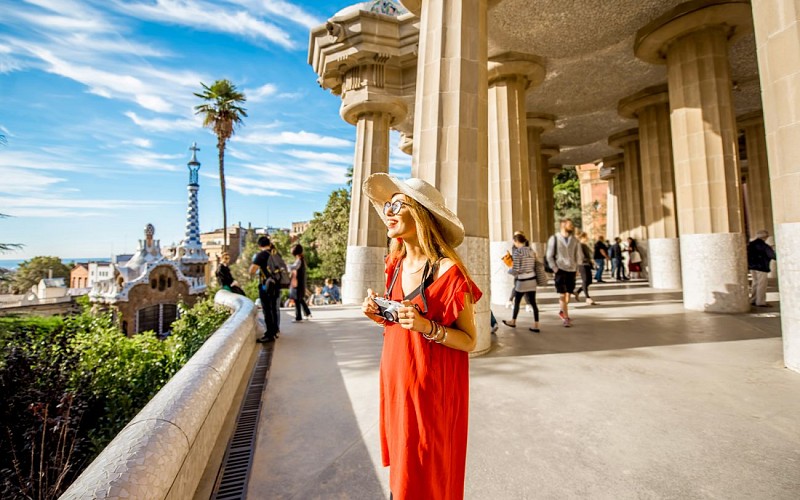
The Gaudí House Museum is a small pink mansion with a tiered roof and a turret, designed by a student and friend of the architect Francesc Berenguer-Mestres.
- On the first floor of the building there are pieces of furniture designed by Gaudí, purchased from wealthy citizens.
- On the second floor, the interiors of the living quarters where the master and his small family lived were recreated. The workshop with models and sketches of projects, several rooms and Gaudí’s bedroom have been preserved almost in their original form. The architect lived in an ascetic environment and, apparently, did not attach importance to personal comfort at all. The personal objects of the architect, put on display for visitors, testify to his complete immersion in creativity.
- The library on the third floor contains more than 30,000 books, documents, personal notes and drafts by Gaudí.
- The house is located in a luxurious garden, where there is a separate exhibition of figures and lattices made of forged metal, created according to Gaudí’s designs.
Interesting features of Park Güell
Park Güell is rightfully recognized as the heritage of Barcelona and all of Catalonia. It will not be possible to explore all corners of the park and study all the details of the composition in a few hours.
Visitors admiring Gaudi’s masterpiece want to come back here again and again to delve deeper into each symbol created by the brilliant architect and artist. It should be noted that all elements of the park perform not only a decorative, but also a utilitarian function.
- Built into the columns of the Hall is a complex storm sewer system that provides the park with water.
- The serpentine bench on the upper terrace is comfortable.
When it was created, Gaudi seated workers in uncured clay, thus giving the seat the natural shape of the human body. At the bottom of the bench are hidden storm sewer pipes led into the columns of the Hall.
- The architect managed to preserve the natural relief of the hill. Each unevenness is used as an additional decoration of the architectural ensemble. Thus, two-level columns, picturesque stone galleries, caves and grottoes were created on the territory.
- It is worth paying special attention to the cladding of the facades, columns, the ceiling of the hall, the bench-snake, in which the broken mosaic technique or trencadice was used. For decoration, Gaudí used fragments of ceramic tiles, broken multi-colored glass and earthenware, small pebbles, construction waste, which were convenient for finishing wavy surfaces.
- There is not a single straight line and angle in the constructions of the park, everything is designed in natural forms – waves, bends, ovals and roundness.
Why visit Park Güell:
- Park Güell is Barcelona’s iconic landmark and one of the most popular tourist destinations.
- The territory of the park is a giant green area: this is one of the most pleasant places for walking, including with children (there is even a playground here).
- On the territory of the park you can visit a museum dedicated to the life and work of Gaudí – the famous architect himself used to live in this building.
Park Güell on the map:
How to get to Park Güell:
- Metro: stop Lesspes o Vallcarca (Line L3)
- Buses: H6 and D40, stop Travessera de Dalt (walk to the park 10 minutes)
- Bus Turístico: Park Güell (blue line)
- Barcelona City Tour: Park Güell (green line)
- From the Alfons X metro station (line L4) there is a special Bus Güell shuttle bus that will take you directly to Park Güell (the bus ride is free with a park ticket).
Opening hours:
- From January 1 to February 15: from 8.30 to 18.15
- From February 16 to March 30: from 8.30 to 19.00
- From March 31 to April 28: from 8.00 to 20.30
- From April 29 to August 25: from 8.00 to 21.30
- From August 26 to October 26: from 8.00 to 20.30
- From October 27 to December 31: from 8.00 to 18.15
Admission fee:
- Standard ticket: 10 EUR
- Ticket for children aged 7-12 and pensioners over 65: 7 euros
- Ticket for children 6 years and under: free
- It is better to buy a ticket in advance, especially during the tourist season!
- Purchase tickets: https://parkguell.barcelona/es/compra-entradas
What to see near Park Güell:
- Sagrada Familia
- Casa Batlló
- House Mila
- The Rambla
- Sant Pau Hospital
- House of Vicens
- Cosmocais Museum in Barcelona
- Bellesguard
- Tibidabo
- Horta Labyrinth
TOP 40 attractions in Barcelona: photo + overview
Park Güell in Barcelona – detailed information with photo
Park Güell is a famous park in Barcelona named after its first owner, Eusebi Güell.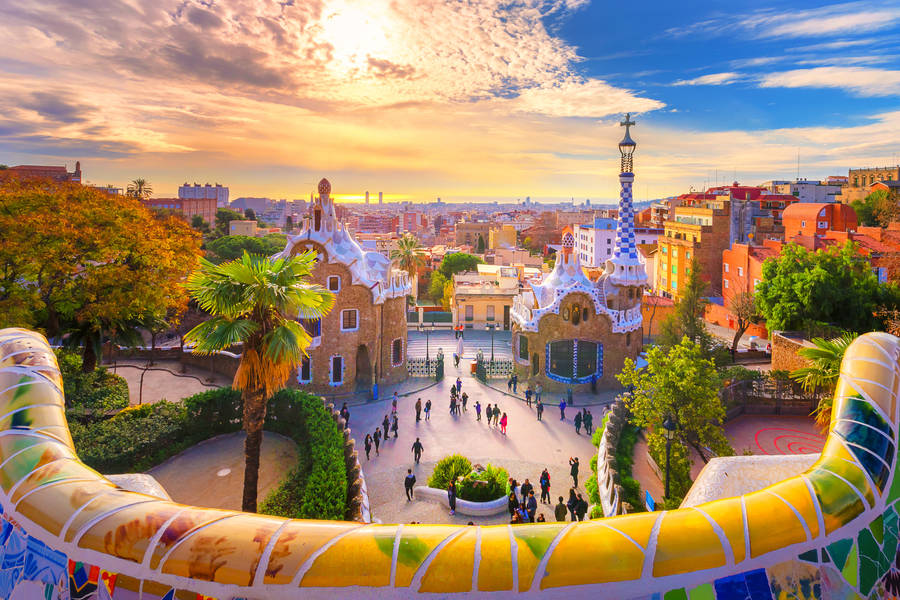
History of the park
At the end of the 19th century, Eusebi Güell, a local entrepreneur, purchased 15 hectares of land. Then it was the outskirts of Barcelona. Guell bought this territory for a reason. He intended to create a garden city here, and the plots were supposed to be sold at a high price for the construction of private mansions. But the people of Barcelona were not attracted by the deserted area on the outskirts of the city. This, in fact, was a “non-prestigious” area. But Guell was not embarrassed, he built a sample house to attract buyers. Then he invited the famous architect Antonio Gaudi to work. Over the years, amazing buildings and houses have been created here. Gaudi himself settled in one such mansion, Güell lived in another, and their mutual friend, the lawyer Trias y Domenech, lived in the third.
After the death of Güell, his heirs did not divide the property, but sold the entire territory of the Barcelona City Hall. A school was placed in Güell’s house, and a museum named after him was placed in Gaudi’s mansion. The park itself is a public area. It is visited by thousands of tourists every year.
Park “by hand”
Walking through the park, one can assume that the architect created this miracle without special calculations, but as if by hand. All the buildings here seem fabulous, painted, they do not have sharp corners and rectangular shapes.
Two gingerbread houses greet visitors at the entrance. Their ventilation pipes look like two fly agarics. Behind the houses is a staircase. It leads to the hall of “one hundred columns”. There are only 86 columns in this hall, but what! Barcelona people often use the hall for concerts because it has excellent acoustics. And, according to the idea, it was supposed to house a market for local residents. Interestingly, the water supply system of the garden city is hidden in the columns.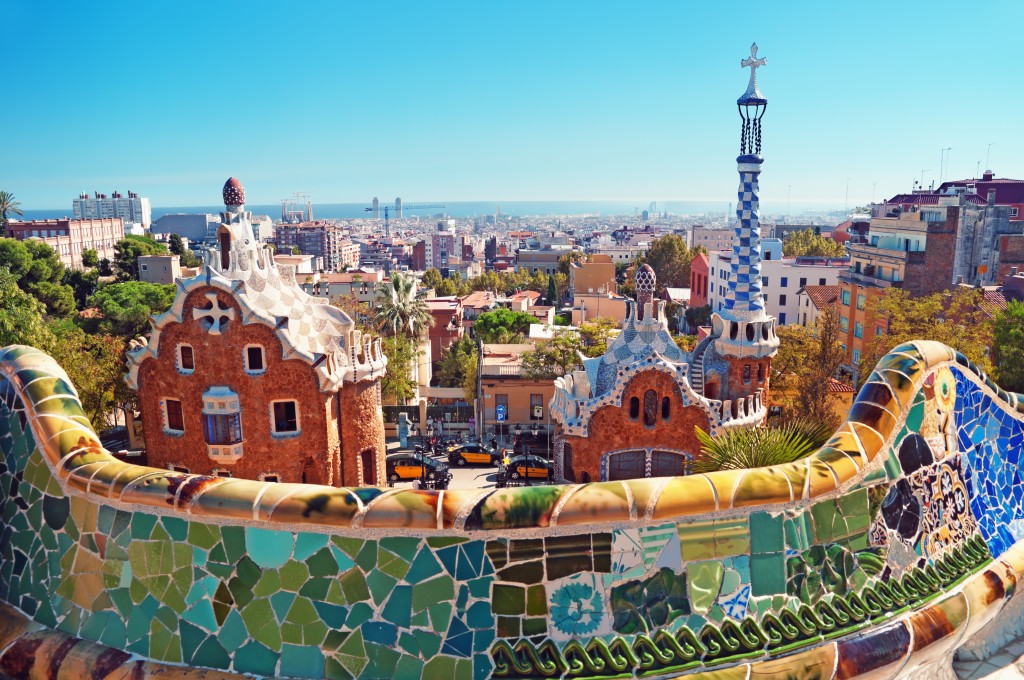
Behind the hall is a theater in the Greek style. Previously, municipal meetings were held here. The perimeter of the theater is decorated with the famous winding bench. Here you can relax, admire the local landscapes, and, of course, take pictures.
Despite the fact that the bench is made of stone, it is very comfortable to sit on. Gaudi took into account the anatomical forms of a man of average height when he created this masterpiece of his. And he laid out the mosaic from broken dishes and bottles, which, on his orders, workers brought to the construction site.
From the central square of the park, seven pedestrian alleys diverge in different directions, which are often called “bird’s nests” because of their bizarre curved shapes.
Park Güell for tourists
For decades the entrance to the park was free. But with a large influx of visitors, the authorities had to introduce entry tickets for tourists.

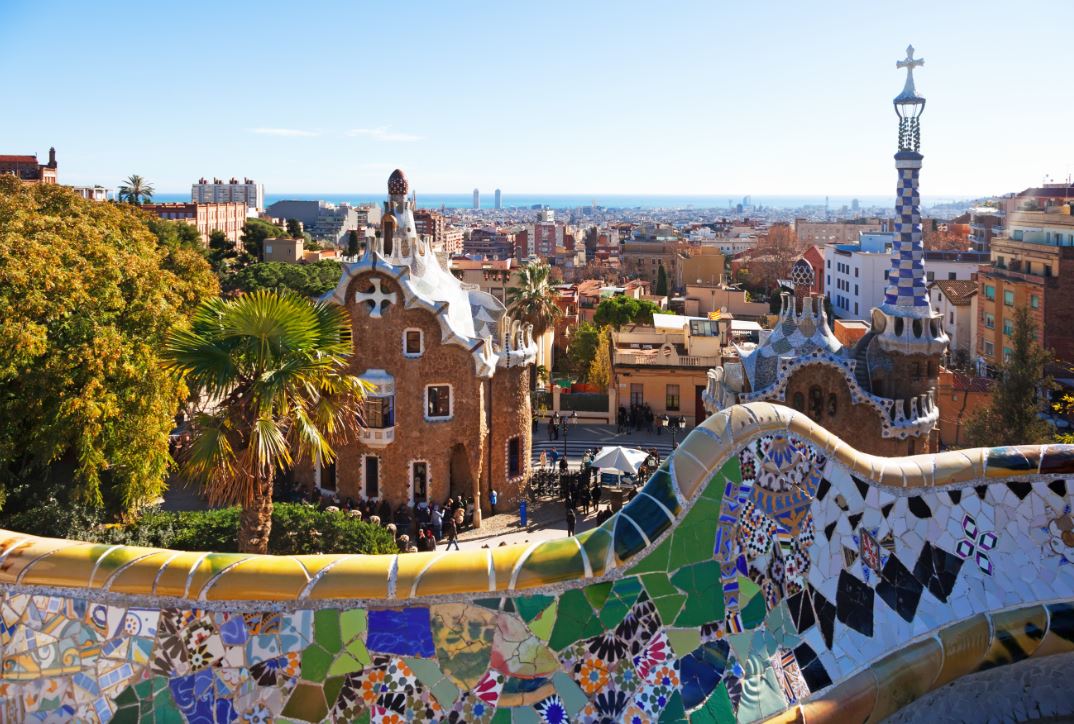
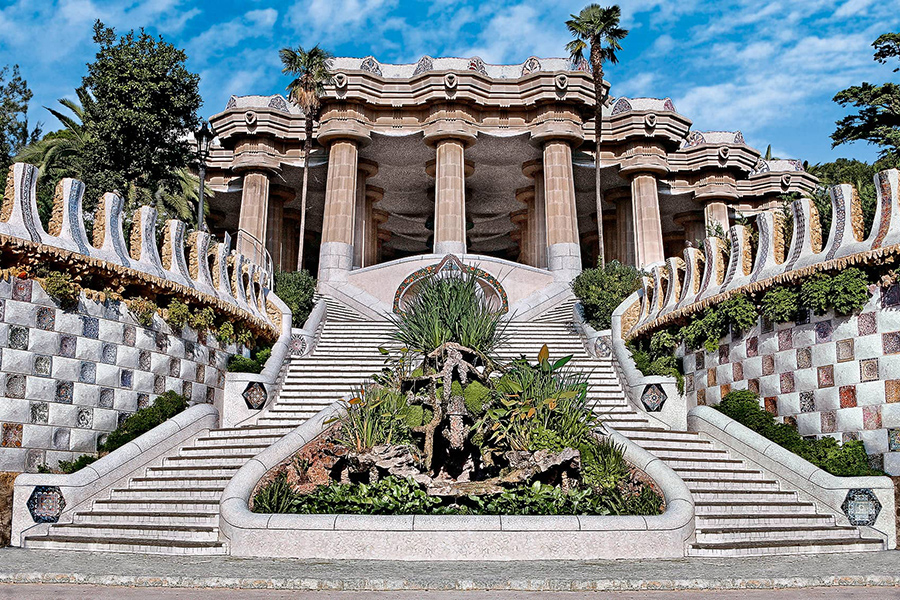
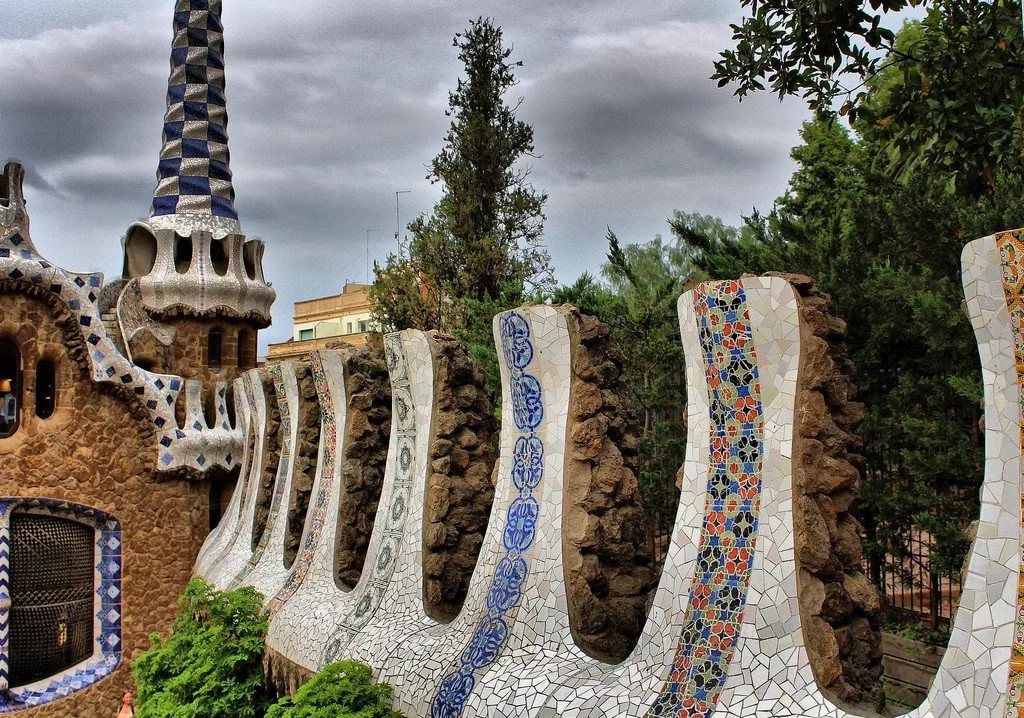 When it was created, Gaudi seated workers in uncured clay, thus giving the seat the natural shape of the human body. At the bottom of the bench are hidden storm sewer pipes led into the columns of the Hall.
When it was created, Gaudi seated workers in uncured clay, thus giving the seat the natural shape of the human body. At the bottom of the bench are hidden storm sewer pipes led into the columns of the Hall. 